|
Every year at the school where I teach, the students do a project on St. Ignatius and our school’s Jesuit identity. We focus on the way St. Ignatius taught people to help others, whether in our own classroom and at home, or on the street and in desperate need of assistance. We teach the students about what it means to live a Magis life, meaning “greater” in Latin, i.e., living for a higher purpose to serve. My favorite part and the purpose of this lesson for the small ones is the opportunity to open their eyes to the needs of others and ask them what they can do to help.
Some common answers:
Although these answers are from 5 year olds who are just learning about God, they carry weight and insight, demonstrating that a Magis life can be lived even through our everyday actions. Now, enough about the cute Pre-Kindergarteners, here is some information on St. Ignatius and the Magis life that we “older kids” can focus on. A short biography of St. Ignatius: Ignacio de Loyola was born in Spain in 1491 at a time when noble families like his expected their sons to become soldiers and fight in battles for their country. Ignacio loved the bravery and recognition that came with being a soldier and often basked in the glory of victory. Little did he know that one day his life would drastically change. In 1521, a French cannonball shot Ignacio in the leg and left him bedridden. While he was recovering from his wounds, he read two books: one was on the life of Christ and the other was on lives of the saints. As he read, he noted the good works that these saints had accomplished and desired to do great things with his life, too. He vowed, then, that he would serve the rest of his life in service to God, doing Christ’s work on Earth. Soon after he recovered, his goal was to be educated, know more about the faith, and serve as a spiritual director. He eventually compiled the many prayers, insights, meditations, and thoughts on how to live in Christ as a person of faith. He called this compilation the Spiritual Exercises. Years later, with friends Francis Xavier and Peter Faber, Ignacio formed a new order called the Society of Jesus, also known as the Jesuits. Their message consisted of doing things Ad Majorem Dei Gloriam (AMDG), in English, “For the greater glory of God,” a message that children and young people can understand easily. The Jesuits were educators and missionaries and opened many schools around the world. St. Ignatius’ message lives on through the words and works of the Jesuits. Additionally, Pope Francis is the first Jesuit priest to be named Pope. In my school each morning, we pray the Suscipe, a prayer that is said to have been written by St. Ignatius, which asks for God’s guidance for the day. It helps the students and teachers alike remember that each day is a new beginning, regardless of what happened the day before. I invite you to take a moment and pray this prayer. I would encourage you to even begin to say it once a week, or each morning on your way into work, or in a quiet space during lunch. As we remember St. Ignatius of Loyola on his Feast Day today, let us remember his way of living Magis, a life with a higher purpose that always strives to serve Christ better than before. The Suspice Take, Lord, and receive all my liberty, my memory, my understanding, and my entire will, All I have and call my own. You have given it all to me. To you, Lord, I return it. Everything is yours; do with it what you will. Give me only your love and your grace, that is enough for me. Amen.
0 Comments
While Christmas is still some time away, the circumstances surrounding the birth of our Lord give reason for us to pause and reflect throughout the year on the great mystery of the Incarnation—the entering of God the eternal Son into time and the human experience. At the Christmas vigil, the Gospel proclamation involves tracing the ancestral lineage of Jesus as “the son of David, the son of Abraham” and the prophetic culmination of divine promises. Those specifications, similar to the grand announcement of The Nativity of the Lord from the Roman Martyrology, draw upon Sacred Scripture to formally declare the birth of Christ and squarely place His entry into time. The USCCB notes: “It begins with creation and relates the birth of the Lord to the major events and personages of sacred and secular history. The particular events contained in the announcement help pastorally to situate the birth of Jesus in the context of salvation history.”
Reflecting on the genealogy of Jesus helps us to remember that he is part of a human family and was raised with particular role models and inherited traditions. It also reminds us that many people helped prepare the way for the coming of the Savior, playing greater or lesser roles for the glory of the Father’s plan. Two people who are part of Jesus’ genealogy, but passed over in Scripture are the parents of the Blessed Mother, Sts. Joachim and Ann. Factually, nothing about the parents of Mary arises from credible historic sources apart from their existence — not even their names of Joachim and Ann are verified! Although they are passed over in Scripture, Mary’s parents are critical as they represent generations who actively participated in the obligations of family and faith life while anticipating the coming of the Messiah. These saints maintained the spiritual and familial environment that nourished and inspired the Blessed Mother to always trust in God and to famously declare, “May it be done to me according to your word.” We find evidence of Mary’s strength of character and trust in the Lord in Scripture, especially Luke chapter 1 verses 28-55 and John chapter 2: Mary is steadfast in making decisions, active in prayer, obedient to the laws of her faith, calm through moments of crisis, and devoted to her relatives. It is not hard to see how such models of parenthood would likely have inspired Mary’s own upbringing of Jesus. We can wonder how much of Mary’s unyielding belief through Jesus’ ministry, Passion, and Resurrection — especially after seeing her son publically brutalized and murdered — was instilled in her by the fortitude and strength she saw modeled by her own parents during her childhood. What can we learn from the parents of the Blessed Mother? We may not all be grandparents, but we can still influence our families through our receptiveness to the perspectives, experiences, and lessons of those preceding us. Truly these are treasures of wisdom not to be taken lightly or ignored. Pope Francis has sought to convey this important observation. During his first World Youth Day as Pope, observing that Brazilians were celebrating Grandparents Day on the feast of Sts. Joachim and Ann, he reflected: "How precious is the family as the privileged place for transmitting the faith! … How important it is to have intergenerational exchanges and dialogue, especially within the context of the family … Children and the elderly build the future of peoples: children because they lead history forward, the elderly because they transmit the experience and wisdom of their lives." The family is often the first community of love, knowledge, and faith that we experience (CCC 2205). It is a great gift to preserve and strengthen that takes our time, talent, and commitment to keep strong. Yet, just as each of our family members are imperfect, so too is our own love despite our best intentions. At times we may lose patience amidst the demands of life. Or, more tragically, we may find ourselves amongst family members who do not know how to love, perhaps products of their own troubled upbringings. When we face difficulties within our families, or see hurt in other intergenerational families, let us remember that regardless of our human relations, we have been born into the spiritual family of the Church. How wonderful it is that despite our earthly circumstances each of us has been entrusted to call God our Father, Mary our Mother, Joachim and Ann our grandparents and Jesus our Brother and Savior. Sts. Joachim and Ann, pray for us! Questions for Reflection: Who are the people in my family who have taught me the beauty of the faith? Which members of my family need me to show them the love of Christ? “Everything is well when it is done as God wishes.” – St. Vincent Pallotti
In October, there will be a Synod of Bishops devoted to the interconnection between faith and vocational discernment in the lives of young people. When a person in Catholic circles, especially a young person, says that she or he is “discerning a vocation,” usually this means consecrated life or priesthood. More often today, though, it also includes discernment of whether one is called to the vocation of marriage. Over the last two decades, I have had the privilege of accompanying numerous young adults who are discerning their vocation. As they have come to a decision about a life vocation, I have witnessed their marriages, consecrations, and ordinations. During this year alone, many months have been filled with the joy of such events which will continue into the foreseeable future. Such moments bring me great joy as they should for the Church. More so, though, we are called to discern the ways in which we can live our primary vocation, the call to holiness. This call, as the Second Vatican Council taught, is “universal” (Lumen Gentium, c. V) It is what God desires of all human beings, to live in a loving union with God and neighbor that leads to salvation. Pope Francis teaches us in Gaudete et Exsultate that “This holiness to which the Lord calls you will grow through small gestures” (GE, 16). Small gestures lead to larger action through discernment. Is such discernment easy? No. In fact, it is challenging and difficult and can be a cross. But, we are called to take up our cross and follow (Mk 8:34) since no one is called to be a professional discerner. We are called to make choices that are for Christ and witnessed through our love and care for our neighbor. Simply praying, thinking, or talking is not enough. We are challenged to move forward. “It involves striving untrammeled for all that is great, better and more beautiful, while at the same time being concerned for the little things, for each day’s responsibilities and commitments” (GE, 169). May the Charity of Christ urge us on! In God, the Infinite Love, Fr. Frank “It’s 11:11… make a wish!” Have you heard of that phrase before? I roll my eyes every time someone eagerly pauses in that moment, thinking that whatever they wish for will magically appear. Though superstitions like this detract from actual prayer, the idea of praying a daily devotion has a long history in the Church. Prayers like the Angelus, a Marian devotion that commemorates the Incarnation, have been around since at least the Middle Ages. Often prayed at noon, the devotional provides the faithful with an opportunity to re-focus and recommit their days to Christ.
Marian devotions in particular can help us grow closer to Christ because Christ himself dedicated Mary to us after his death. When Jesus said, “Woman, behold your son. Son, behold your Mother,” he was providing Mary as an intercessor for us. After Jesus’ death, the Acts of the Apostles records her as being present when the disciples gathered at Jesus’ Ascension and then later in the Upper Room during the Descent of the Holy Spirit. Because of Mary’s continual intercession for the followers of her Son and because of her role serving with the Apostles on earth, she has historically been known as the Queen of Apostles. As tradition goes, it is Mary who bolstered the Apostles in moments of discouragement and fear after the death and Resurrection of Christ. Prayers to Our Blessed Mother never go unanswered. As a personal devotion to her, I offer up a Hail Mary for my vocation every time I see an 11 on the clock. I like to pray when I see the number in order to turn the superstitious ‘11:11 practice’ into something for the glory of God; you could pray when you first wake up, or at noon like those who pray the Angelus, or during your commute to work or school. Daily devotions are flexible! The important part is to make sure that you are checking in with our Heavenly Father every day. In particular, praying with Mary encourages us to adopt as our own her obedience and love for the Father. And of course, Mary is never outdone in generosity, and her intercession to Jesus is the most powerful of all. I encourage you to begin a daily devotion of your own. It can be for your vocation, for a personal trial, for someone else – for whatever is on your heart that day. My prayer for my vocation was inspired by a friend who made a daily offering of prayer for her future husband and is now married and has four beautiful babies. She told me her life wasn’t always pointed straight to God’s will, and how she grew up neglecting her Catholic faith. As she grew older, she knew that her soul was yearning for something to grasp, to hold onto, to fill the void in her heart. She decided to go to adoration, and was inspired through prayer to begin a daily devotion to Christ through Mary. That devotion she made fifteen years ago to Our Mother changed her heart and her life. I pray that you also will be inspired to take up a daily devotion to Our Mother, who so graciously hears our intercessions and carries them to her son. As I pray each day this devotion, I will pray for you, and this journey to Heaven that we are taking together. Question for Reflection: What do my daily devotions look like? What is an easy moment in the day that I can take some time to pray to Our Mother for guidance and intercession? Kathleen O’Reilly is a senior at Saint Vincent College in Latrobe, Pennsylvania. Half of America is single. The hook-up culture and age of technology have greatly changed the way people date; the script for traditional dating is often considered unpopular and “outdated.” Despite all of this, people still desire authentic, meaningful relationships. This illustration of the typical modern dating scene is explored in a film called The Dating Project, a new documentary that follows five single men and women, ages 18-40, as they navigate the dating landscape on their search for lasting relationships. (The film’s executive producer is Steve McEveety, who also produced The Passion of the Christ and Braveheart). I found the film to be honest and, at times, humorous. All the main characters are unscripted, and I felt their stories accurately portrayed the frustrations many of us have experienced in today’s confusing dating world. The Dating Project was inspired by Boston College professor Dr. Kerry Cronin’s infamous “dating assignment,” which Dr. Cronin developed after learning her students didn’t know how to ask someone else out on a date. In the assignment, each student must ask another person on a “Level 1 Date” following a certain set of rules. While some critics call Dr. Cronin’s dating rules old-fashioned, her rules actually encourage getting to know a person for who they are—without sexual expectations. The goal of a Level 1 date is purely for information gathering. Dr. Cronin outlines specific rules for this first date:
These rules emphasize that dating should be about getting to know a person, appreciating his or her qualities and determining whether they are the type of person you would like to eventually explore a long-term romantic partnership with. When we lose sight of this, we are only seeing men and women as commodities – mere sources of pleasure or satisfaction for ourselves in the short term. We are called, instead, to recognize that all people are made in the image and likeness of God—which is difficult to do when you think of only how another person can benefit you. We have to be mindful of not falling into what Pope Francis calls a “throwaway culture” when it comes to relationships. We aren’t shopping for a product on Amazon, after all. By the conclusion of the documentary, we see the five individuals who serve as the focus of the film progress in their confidence when it comes to dating and relationships. The college students who participated in the dating assignment remarked that asking someone out on a date in person was a much better feeling than a hookup. They said they would continue this way of dating in the future. I was most impressed with the change in the 40-year-old man. He led a more non-committal lifestyle when it came to relationships and by the end, I could tell the questions the directors asked him, such as, “If the woman of your dreams walked up to you, what would you say?”, had made an impression on him. He thought more deeply about how he viewed women as daughters of God, he could imagine himself in a long-term relationship, and he felt like dating within the parameters of the assignment allowed him to avoid temptations more easily. As children of God, we are called to a higher standard than what our culture provides. We need to step up as Catholic men and women and change the dating narrative. We must be courageous! As Pope Saint John Paul II says in his letter to families, “Do not be afraid of the risks! God’s strength is always far more powerful than your difficulties!” Ah, summer. The sun is shining. The beach is calling. There’s much more time for leisure (which is so important! Read Pieper if you need convincing.). For me, more leisure means more time to read and write and consequently, more time to explore the beauty of our faith. Here’s what I’m reading this summer:
2. Four Quartets by T.S. Eliot Speaking of works I will revisit for the rest of my life, I read Four Quartets multiple times a year, including every summer. I mentioned this genius work in a previous blog, and must bring it up again. This four-part poem from Eliot isn’t the lightest read, but there are plenty of commentaries out there for guidance. I recommend Dove Descending: A Journey into T.S. Eliot’s Four Quartets. Written after his conversion, Four Quartets can be read as a response to Eliot’s earlier, more famous and more despondent poem, The Wasteland. Whereas The Wasteland wonders whether a life of harmony and wholeness is possible in the modern world, The Four Quartets presents God’s plan for salvation history as not only possible, but ideal. And let me tell you, Eliot’s incredible verse is a spiritual game-changer. 3. Spiritual Writings by Flannery O’Connor, edited by Robert Ellsberg Flannery O’Connor never wrote formal ‘spiritual writings’; rather, this is a collection of her letters and other works that touch on spiritual topics. Her writing style is sharp and punchy and will have you on the edge of your seat. The collection includes one of Flannery’s more famous letters wherein she recounts her argument with a writer about the True Presence of Christ in the Eucharist. Flannery says to the writer who has just asserted that the Eucharist is mere symbol, “Well, if it's a symbol, to hell with it.” If you like literature of the American South, snappy comebacks, and/or want to join the Catholic hipster scene, Flan is your girl. 4. 40 Years with a Saint: Blessed Alvaro del Portillo on Saint Josemariá Escrivá by Cesare Cavalleri Saint Josemariá is a twentieth century saint who founded Opus Dei, a personal prelature in the Catholic Church that focuses on finding and serving God through everyday life. Opus Dei runs the Catholic Information Center in Washington D.C., where many young professionals like myself attend talks and social gatherings. This book is the thoughts of one saint on another saint. That’s pretty awesome. There are also many awesome YouTube videos with footage of St. Josemariá which I encourage you to watch; it’s wild that we live in an age where we have footage of saints in action! 5. Pier Giorgio Frassati: A Hero for Our Times by Cristina Siccardi Modern Catholic lore is full of epic stories about Blessed Pier Giorgio Frassati. One of my favorites is that he used to go to the local pool hall and hustle the other players. When he won, he didn’t take his opponents’ money, but instead had them spend an hour with the Blessed Sacrament. I picked up this book to verify these stories and to learn more about the man who proclaimed, "Verso l ‘Alto!" (“To the heights!”) It’s not disappointing. 6. Meeting Jesus Christ: Meditations on the Word by Msgr. J Brian Bransfield As Catholics, we tend to get a bad reputation for our lack of engagement with Scripture (even though every Sunday Mass is flooded with passages and references). This book helps us dive a bit deeper both familiar and more obscure Gospel passages. If you want to engage more with Scripture this summer, this book is a great place to start. 7. Laurus by Eugene Vodolazkin Everyone loves a good Russian novel and there are many (think Anna Karenina, War and Peace, Crime and Punishment, The Brothers Karamazov etc.). Laurus is a contemporary Russian novel about holiness. Laurus loses the love of his life when she dies giving birth, and the rest of the story is about how he comes to terms with his suffering and ultimately God. The book is extraordinary and the translation is superb. It’s also a great work of historical fiction, illustrating life in Russian during the Middle Ages. Comment below with what you are reading this summer! And don’t forget to check out the many Catholic Apostolate Center eBooks by clicking here! In my work at the Catholic Apostolate Center, and as a self-identified millennial, I am frequently asked: "How can we bring young people back to the Church?" It's a question I get asked a lot by people who are my parents’ age and older, mainly because they see their children, grandchildren, or nieces and nephews ‘willingly’ leaving the Church. Fortunately, our Church across the globe is also asking this very question during its October 2018 synod on Young People, the Faith, and Vocational Discernment. In preparation for the synod, the Vatican recently released the Instrumuntum Laboris (Latin for "working instrument") for the bishops of the world to review, discuss, and offer insights to Pope Francis. The document talks about the challenges that face young people, classified as those aged 16-39, in the Church and world today—from being an individual in a global society, to finding meaning in life, to living in an increasingly materialistic world, etc. —and then discusses possible solutions to these problems. The document suggests that solutions for individuals vary, but that all begin with discernment through accompaniment. When we speak of accompaniment, we might think of one person who helps another work through some difficulty by offering insight or expertise on how to overcome it – kind of like a coach. Instrumuntum Laboris, however, emphasizes that the accompaniment is not just a simple form of coaching, but rather: "...true accompaniment will strive to present vocation not as a pre-determined fate, a task to be carried out, a ready-made script, to be accepted by discovering how to implement it effectively. God takes seriously the freedom He has given to human beings, and responding to his call is a commitment that requires work, imagination, audacity and willingness to make progress also by trial and error" (Instrumentum Laboris, 121). It is through accompaniment that young people (and by extension all people) can understand the power of God in their lives because they see God working through that other person. This mentor helps the young person to see how God calls each and every one of us to be a messenger for the Word of God. The mentor also helps the young person to discover the best way to use his own talents and gifts for the Mission of the Church. The hope is that through this pairing, the spiritual growth of the individual will lead to the spiritual growth of the universal Church. Now the next questions to ask are: "Who is a mentor? What does a mentor look like?" Our Bishops and Magisterium have wisely begun to ask this question as well and have devoted an entire section of Instrumentum Laboris to mentorship and the ideal mentor: "[A mentor is] a faithful Christian who engages with the Church and the world; someone who constantly seeks holiness; is a confidant without judgement; actively listens to the needs of young people and responds in kind; is deeply loving and self-aware; acknowledges their limits and knows the joys and sorrows of the spiritual journey ... mentors should not lead young people as passive followers, but walk alongside them, allowing them to be active participants in the journey" (132). From my experiences with my mentors and as a mentor myself, as well as the experiences of friends and co-workers, I understand that active participation is the key. Unlike a coach who watches his players from the sidelines, a mentor is someone who walks with his mentee on the journey to holiness, allowing himself to grow in holiness as well. Spiritual accompaniment, as the document states at different points, is not easy—in fact it is quite difficult. It requires a deep love of Church, confidence, humility, self-awareness, and commitment. It takes time and dedication, like all strong relationships do. It requires an understanding that our faith is not passive, but rather a calling "to go and make disciples of all nations.” We are all called—priests, religious, and lay—to be mentors to those of all ages, demographics, and steps in their faith journey. Let us pray that God reveals to us those whom we are called to mentor and that we have the courage and strength to walk alongside them in our shared pursuit of holiness. Question for Reflection: What aspects of myself are well suited to mentorship? How can I continue to develop those traits or skills?
“For even as the body is one and yet has many members, and all the members of the body, though they are many, are one body, so also is Christ.” (1 Corinthians 12:12)
Frequently in the bible, we read that we are all members of one body, making up the church in our world. We must work as one body, sharing as one large group, the church. Although I’ve heard and read this teaching several times, for most of my life I still saw the church as a building. Sadly, this imagery left me with gaps in my understanding which impacted my spiritual life. In Spanish, the word “compartir” means “to share.” One of the biggest impacts that mission and life in Bolivia has had on my spiritual life is the “compartir” culture. Not only do people share with their friends and the people they know well, but they share with everyone. I am currently serving as an overseas lay missioner at the Universidad Academica Campesina-Carmen Pampa (UAC). So far in my time here in Carmen Pampa, Bolivia, I have witnessed everyday acts of sharing. People don’t always have much, but they are always happy to share what they do have. On campus, students have shared their snacks with me. A student invited me to his home to share about Bolivian culture with me. Whenever students attend events and are asked why they chose to come, the resounding answer is simple: “compartir.” Their desire is to share. I learned a great lesson on what it means to share while on a recent trip to a local town with a group of students in Pastoral, the campus ministry group at the UAC. It was a day full of activities to get to know one another: we played games, shared in music, celebrated mass, and ate wonderful food. I had a great time and really got to know some of the students better. I was amazed by the way that everyone shared their time and energy, even when it would have been easier to let someone else take charge. Because I was so amazed by all of the sharing, I was caught off-guard by a conversation that occurred a few days later at our Pastoral group meeting. The group leader asked each person to share a reflection about the trip.The first student to speak shared that she thought the trip had been “mas o menos”, “more or less.” I was a bit confused. As we continued around the circle, many people voiced similar thoughts. I was shocked that the trip I thought was so beautiful had left others feeling disappointed. Then someone started to go deeper: the reason many people had felt a little discouraged was because during most of the trip, people had been in separate groups—one group working on the cooking, one group singing, one group playing soccer. We hadn’t truly been sharing as one. I thought back to what was the most powerful part of the trip to me, and I realized that it had been in mass. The church was small and made of cement. It had plain, cracked windows, and we sat in red plastic chairs. But during mass, we had all come together as one group to share in praise to God, to share in the word of God, and to share in the Eucharist. It had been so powerful because we were all there as one. I want you to close your eyes now and come up with an image of church. I’ll admit that every once in awhile, I’m still going to picture a building. This building may have the most pristine stained glass windows, with beautiful mahogany pews, and a perfectly polished tabernacle. But no matter how beautiful the building may be, this image still leaves gaps. Because no matter how many people are packed in that church, there are still hollow spaces when it is just a building. Like Jesus taught us, we are the church. As the church, it is our mission to act as the body of Christ here on earth. The truth is that we aren’t truly acting as the hands and feet of Christ until we use those limbs to reach out and share. And reaching out isn’t a task we were made to do on our own. Christ’s body was made to work as one unit. When we spread the gift of sharing as one people, we begin to fill voids. The desire of my students to share and to work together as one community and one body has been such a powerful experience. I am still learning what it means to truly “compartir” each and every day. I’m learning how to see myself as a part of a larger, complete body. In embracing this life of sharing, I have found myself more deeply appreciating my time with others, as a part of God’s church, and so becoming closer to Him and to His people. To learn more about service opportunities through Franciscan Mission Service, please click here. Editor's note: This blog was originally published through the Catholic Volunteer Network in May 2018. It has been reposted with permission. Magdalene Van Roekel is a volunteer with Franciscan Mission Service What is the best method of evangelization? In an era when 35% of young adults (ages 18-29) identify as having no religion at all, we as Christians ought to consider whether our approach to evangelization is working. Too often we think that if those outside the fold just heard the right arguments, if they just read--really read--the right things, they would see the capital “T” Truth. We press onto our non-religious friends blogs and books, podcasts and pamphlets, all with answers to the usual questions skeptics raise (What about evolution? What about violent extremism? Etc.) and we assume that they’ll suddenly just see the light and believe. It should be apparent by now that this approach doesn’t work. Imagine doing this in any other context. Paraphrasing an analogy from Bishop Robert Barron, let’s imagine that you are taking a group of seven-year-old boys out onto a baseball field for the first time. You say as the coach, “Now boys, today I’m going to teach you about the incredible game of baseball. It’s a game that you’ll love your whole life. It’s a beautiful game of strategy and strength, precision and unpredictability. Ready to get started? Good. For your first lesson in this game, I’m going to teach you the infield pop-fly rule. Now, yes, it’s a ticky-tacky rule, but it’s actually crucial and can make the difference in a big play. Now let’s go sit on that bench in the dugout and take a look at this little diagram I have here about what to do when you encounter this tricky little hit.” What seven-year-old walks away from that with a love for baseball? Rather, says Bishop Barron, you ought to introduce the little guy to the beauty of the game. Take him to the stadium and let him see the best of the best playing. Let him watch as the batter slams one to left field only to have the ball caught in a running dive by the outfielder—his whole body outstretched from head to toe, muscles straining in his neck, eyes up, glove out, lunging across the green as he just barely catches the ball with an audible thunk! Let the boy see the magic of the game unfold before him. When we allow a beautiful thing to be beautiful, it speaks for itself. There’s no need to come armed with arguments. The beautiful thing itself lays hold of our soul and draws us in. For the seven-year-old baseball player, he sees the beauty of the game, he desires to participate, and then once he himself is playing, he starts to learn the nuances of the rules and how the rules themselves are part of what makes the game beautiful. In time, the boy is so in love with the game and its rules that he is moved to share that love with others, to get them to see what he sees. Citing the 20th century theologian Hans Urs von Balthasar’s theology of aesthetics, Barron says that beauty claims the viewer, changes him, and then sends him on mission. Theologically, beauty is one aspect of the three properties of being called the Transcendentals – the True, the Good, and the Beautiful, all of which together lead us to God, who is Being itself. The trick, of course, is determining the order of our approach. When we start our mission of evangelization with truth we too often shut down dialogue with non-believers, who often find themselves enmeshed in a culture of moral relativism and self-made meaning – who are you to tell me what’s true? I agree, with Balthasar, Bishop Barron, and others, that we ought to flip the order around. Let the beauty of our Christian faith–whether it is displayed through our liturgy, our sacred art and music, our actions toward one another, or the radiant light of Christ shining through us–draw people in. Let them experience the beauty of the Faith so that they desire to participate in it, in however small a way at first. Consider this hypothetical scenario: A non-believer friend sees you act charitably toward someone who has made you suffer. He sees you forgive and put the wrong behind you. He is taken aback by your generosity. He thinks that he would like to be like that too. In time, he finds himself emulating you. In time, he begins to see that Christians as a people are not all hypocritical. In time, he begins to think that Church teaching might actually engender goodness in human beings in general, not just you. In time, he finds himself agreeing with the basic moral vision of Christianity, even if he rejects the faith itself. In time, he happens to hear Christ’s Sermon on the Mount and begins to wonder what it all means. In time, your beautiful action leads him home. As Christians, our love for Christ and our love for the Church sometimes make us blind to the sincerity of many skeptics. We dismiss their often earnest desire to do and be good merely because we’ve determined that they can’t do it without God. We feel like it’s our duty as Christians to steer them straight, bring them to the fold. Yet, the next time we consider jumping into the Facebook fray of endless arguments about religion and morals, let us instead refresh our screens, share something beautiful, and move on. Let us allow beauty to soften our hearts of stone and turn them to the sacred heart of Jesus. Question for reflection: Which of your interests and passions in life started with an experience of beauty? Who among us seems to need an experience of the beautiful and how can you be the one to give it to them? A few weeks ago, my Bible study group was discussing the topics of suffering, healing, and the lies that we tell ourselves when afflicted by painful situations. Lies like "I am unloved, unwanted or alone," that make us feel hopeless, despairing or confused. Lies like "God has abandoned me in this situation," which lead us to distrust in the Father's goodness. We agreed that it is often easier to believe lies like these because we are already in a position of pain and in some sense they allow us run from or numb ourselves from the situation that caused the original pain. The leader of my Bible study, a beautiful mother of eight children, then compared this coping mechanism to giving birth. She explained to us that throughout her eight deliveries with her children she has come to grow in her capacity to lean into the contractions she experiences. She went on to say that the more she is able to relax and breathe through the contraction, the faster and more apt her body is able to do what it is called to do. “I don’t want to waste my contraction,” she said. Women tend to fight their contractions in labor (understandably in pain), but the tensing of the body prevents the contraction from doing what it is meant to do. She explained that leaning into the contraction is a lot like leaning into the suffering that God calls us to. Today, on the Feast of St. Thomas the Apostle, I find myself reflecting on what Thomas is most known for, his “doubting” ways. Thomas’s human response to seeing the Resurrected Lord is one with which I resonates with me deeply. Jesus gently allowing Thomas to put his finger in his side is a part of the Gospel that constantly baffles me – the compassion and understanding of Jesus in that moment! Thomas’ wound of doubt is healed by Jesus’ wounded side. With the Lord’s guidance, he leans into the “contraction” of his own suffering by allowing himself to experience in a limited way the suffering of Christ. With the Lord’s gentle hand leading him, Thomas leaves his doubt and finds faith and joy! Have you been fleeing or numbing yourself from a painful situation of suffering? What are the “contractions” of your life that the Lord wants to lead you into? What parts of your life need the gentle hand of Christ? Today, let us ask St. Thomas to pray for us and let us ask for the grace to lean into our own pain and into the Lord’s side so that we too might respond, “My Lord and my God!” “He will provide the way and the means, such as you could never have imagined. Leave it all to Him, let go of yourself, lose yourself on the Cross, and you will find yourself entirely.” St. Catherine of Sienna “Christians must lean on the Cross of Christ just as travelers on a staff when they begin a long journey.” St. Anthony of Padua |
Details
Archives
July 2024
Categories
All
|
About |
Media |
© COPYRIGHT 2024 | ALL RIGHTS RESERVED

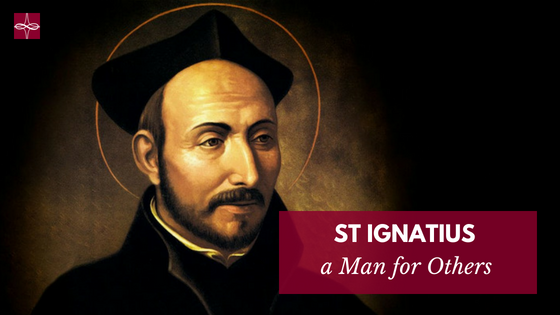

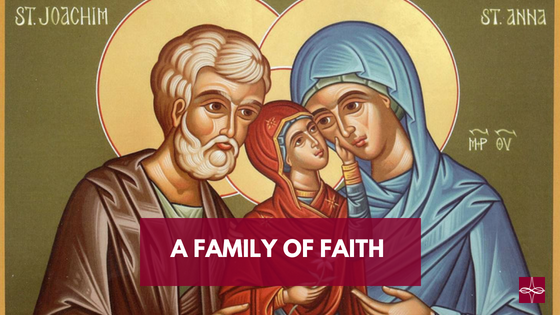


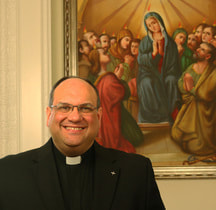
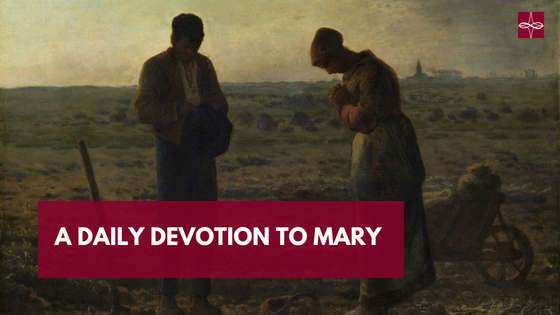


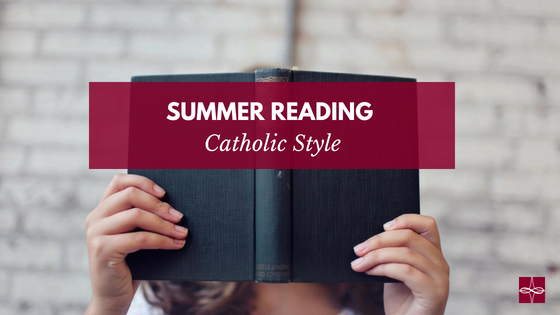



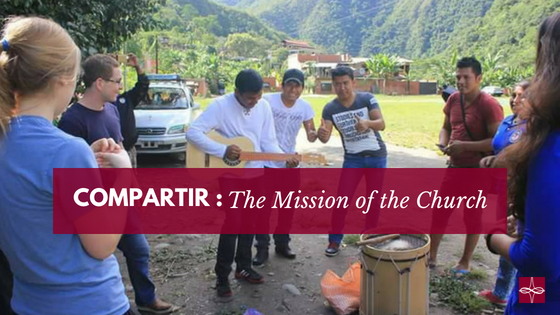


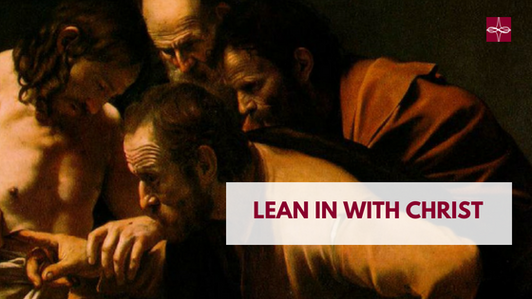

 RSS Feed
RSS Feed